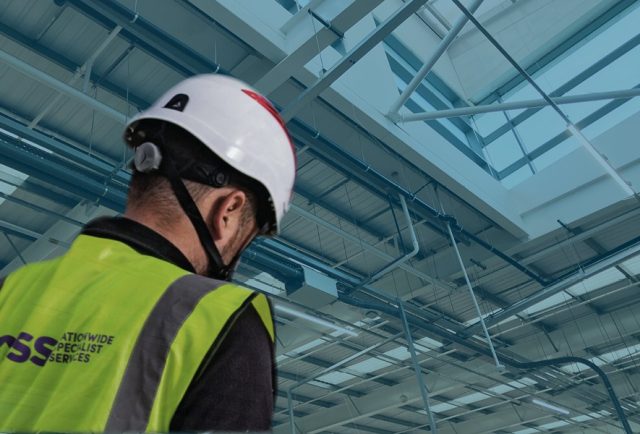A siphonic drainage system is specifically designed to cope with high intensity storms, draining rainwater much more efficiently than a traditional rainwater system.
Here, we answer some of your most frequently asked questions about how siphonic drainage systems work.
Why Should You Consider Using Siphonic Drainage?
A siphonic drainage system is the most effective way to protect buildings with flat and low-gradient roofs from high velocity rainfall. Unlike traditional systems which can struggle to drain large volumes of storm water, a siphonic system creates a vacuum effect, resulting in a higher flow rate which rapidly removes water and prevents accumulation.
How Does a Siphonic Drainage System Work and How Does It Differ From a Gravity System?
Unlike a traditional drainage system which relies on a downward slope and gravity to drain, a siphonic drainage system uses baffle plates to prevent air entering pipes during intense storms. This creates a siphonic hydraulic action that can drain water fast, using fewer, smaller diameter downpipes.
A traditional gravity system requires careful planning of slopes and gradients, while a siphonic system offers greater flexibility for flat roofs.
What are the Advantages of Siphonic Drainage?
Siphonic drainage gutters only need one or two downpipes, while there is a reduced requirement for underground pipework, meaning much of the system is invisible and more aesthetically pleasing than a traditional system.
Multiple outlets can be connected to a single connector, while pipe sizes can be reduced overall, reducing loads on a building structure in comparison with a standard system.
Because the need for underground pipework is reduced, installation costs are lower, while pipework is accessible above ground for easy maintenance and repair.
How Can I Identify If my Drainage System Is Siphonic?
There are a number of signs that your system is already siphonic; if your building has a limited number of downpipes, or if the pipework is above ground. However, without inspection, it’s difficult to know whether it complies with the current standards and requires any maintenance or updates.
NSS can undertake a detailed survey to ensure your system is appropriate for your building.
I Already Have a Siphonic Drainage System – How do I know If It’s Fit for Purpose?
Many early siphonic systems were designed to the BS 6367: 1983 standard, however this has since been updated twice; in 2000 (BS EN 12056-3:2000) and 2007 (BS 8490:2007). The 2007 standard added 10% to the required capacity of siphonic drainage systems – so if yours was fitted prior to this date, it may now be below the required standard.
Systems that fall below the current requirement typically need additional maintenance to offer adequate protection. NSS can undertake a comprehensive survey to identify any necessary updates.
My Siphonic System Isn’t Working Properly – What Could Be Wrong?
Over years debris can build up on the roof of a building, while a lack of maintenance for systems installed before the updated standards were introduced can lead to operational failure.
NSS recommends that gutters and baffles are inspected and cleaning approximately three times each year to maintain full functionality. Speak to us about our proactive preventative maintenance (PPM) service to ensure your system remains in constant operation.
What Does a Comprehensive Siphonic Drainage Survey Include?
As a member of the Siphonic Roof Drainage Association, NSS is fully qualified to design, install, repair and maintain your siphonic drainage system.
Our qualified engineers can visit your premises to undertake a comprehensive survey including:
- A thorough inspection of your current systems and gutters, including checks of your fixings, welds and rainwater outlets;
- Calculations to ensure your system is suitable to handle the maximum rainfall intensity in line with current British Standards;
- Details of any required remedial work to bring your system back to capacity;
- A detailed report including recommendations for the most viable system to achieve suitable rainfall protection for the long-term.
Where can I go for further information?
Check out our Quick Guide to Siphonic Drainage for more on how siphonic drainage works, the key benefits, and critical calculations to ensure your system is fit for purpose.

